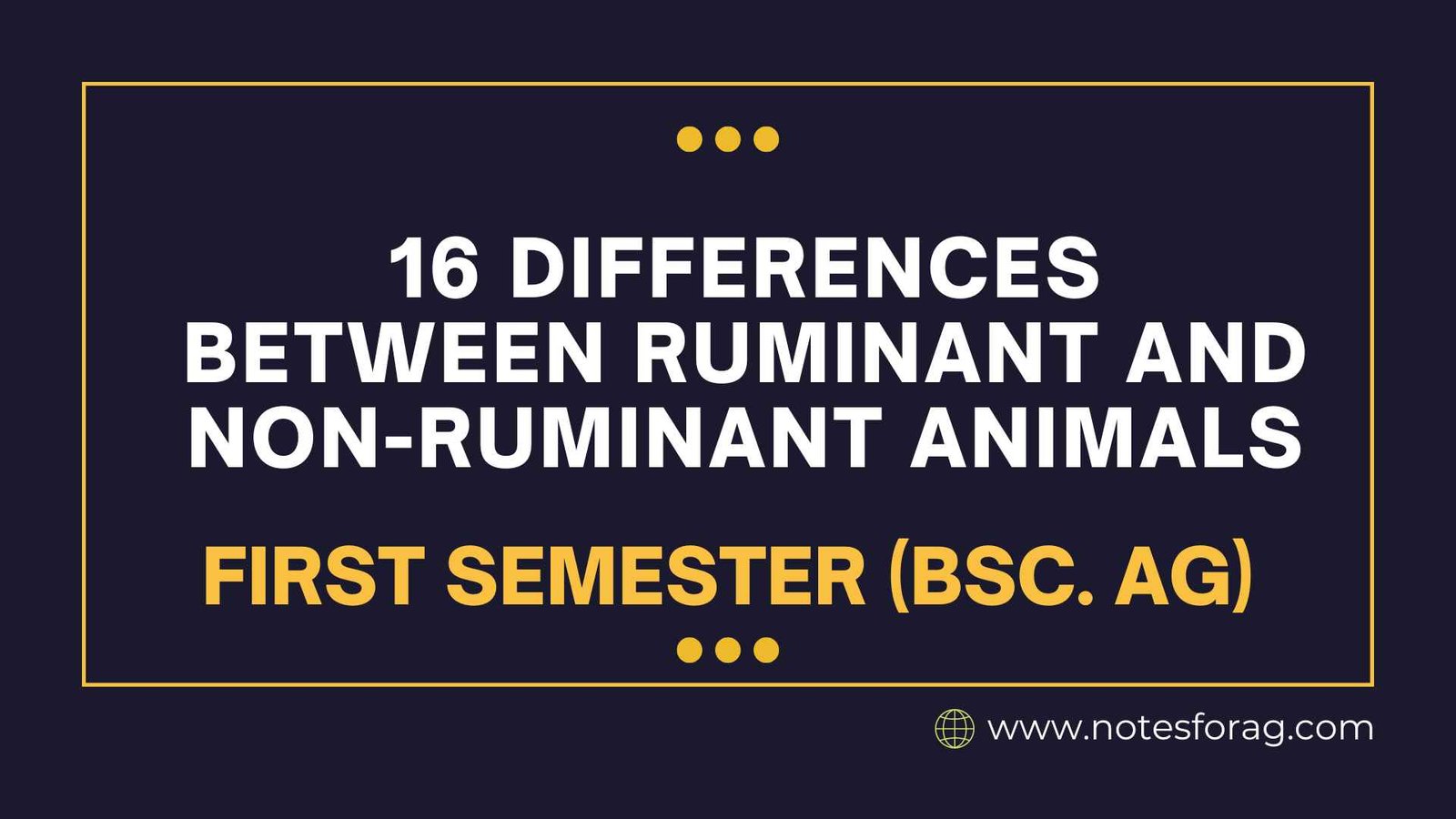Ruminant and non-ruminant animals represent two distinct groups based on their digestive systems. Sheep and cows are examples of ruminant animals that have a unique method of food digestion. To ensure that their meal is properly broken down, they chew it twice using their numerous stomachs. This makes it easier for them to consume difficult foods like grass. Animals that are not ruminants, like chickens and pigs, have simpler stomachs and only require one meal to be digested.
Table of Contents
Ruminant Animals

Ruminant animals are a group of mammals characterized by their specialized digestive system that comprises a stomach with several chambers. Through the process of fermentation in their stomachs and subsequent regurgitation and re-chewing, or rumination, these compartments allow them to easily digest fibrous plant material. Cattle, sheep, goats, and deer are a few types of ruminant animals. Because they transform plant biomass into valuable goods like meat, milk, and wool, they are important to agriculture.
Non-Ruminant Animals

Non-ruminant animals are a group of mammals whose digestive systems lack the specialized stomach compartments found in ruminants. Rather, they have more basic stomach structures and depend on the digestive tract’s enzymes to break down food so that it may be absorbed. Pork, horses, dogs, cats, and poultry like chickens and turkeys are a few examples of non-ruminant animals. Compared to ruminants, these animals usually eat smaller, more frequent meals and a more diversified diet.
Ruminant and Non-Ruminant animals
The differentiation of ruminant and non-ruminant animals are given below:
| S.N | Ruminant Animals | S.N | Non-ruminant animals |
| 1) | Ruminants can digest fibrous plant material by fermentation and rumination because they have a sophisticated stomach with four compartments. | 1) | Non-ruminant animals have an easier stomach that relies on enzymatic digestion and does not have many compartments. |
| 2) | This helps break down difficult plant material by regurgitating partially digested food (cud) and chewing it again. | 2) | They usually eat smaller, more frequent meals and do not regurgitate food. |
| 3) | Ruminant Animals utilize the small intestine as well as the stomach compartments to absorb nutrients. | 3) | Nutrient absorption in non-ruminant animals occurs primarily in the small intestine. |
| 4) | Fecal matter such as grass and hay is preferred by ruminant animals. | 4) | Animal- and plant-based foods can be consumed by non-ruminants, who also have a more diversified diet. |
| 5) | Ruminant Animals are frequently larger because of their capacity to take nutrients from roughage and their unique digestive system. | 5) | Non-ruminant Animals differ in size but typically have a less complex digestive system that is tailored to meet their requirements. |
| 6) | Ruminants can further break down tough plant fibers by using their special capacity to regurgitate and re-chew their food, a process known as cud. | 6) | Non-ruminants only use their stomach’s enzymatic digestive process; they do not display this behavior. |
| 7) | The stomachs of ruminants, including sheep and cattle, are separated into four sections: the reticulum, omasum, abomasum, and rumen. In the process of digestion, each compartment has a distinct function. | 7) | The stomach of a non-ruminant animal usually has one chamber. |
| 8) | Ruminants digest cellulose-rich diet by microbial fermentation occurring in their stomach chambers. Methane and other volatile gasses are produced throughout this fermentation process. | 8) | Food fermentation differs in non-ruminant animals. |
| 9) | Belching is the process by which ruminants emit a large amount of gas during fermentation. This increases emissions of greenhouse gases. | 9) | The simpler digestive systems of non-ruminants result in lower gas production. |
| 10) | Ruminants need particular feeding and management techniques to support the processes of fermentation and rumination because of their distinct digestive physiology. | 10) | Various management techniques are required for non-ruminants due to their unique nutritional and care needs. |
| 11) | Saliva production by ruminants is high, which helps to buffer the pH of the rumen. | 11) | Compared to body size, non-ruminants produce less saliva. |
| 12) | The rumen of ruminants contains a varied population of fungi, bacteria, and protozoa. | 12) | The digestive system’s symbiotic microbes are either less varied or nonexistent. |
| 13) | They rechew food that has been regurgitated, or chew cud. | 13) | They chew food just once. |
| 14) | In order to improve the surface area available for nutritional absorption, ruminants have rumen papillae, which are tiny projections that resemble fingers and line the rumen. | 14) | Due to the absence of a rumen compartment, they lack rumen papillae. |
| 15) | In a symbiotic interaction with microorganisms, ruminants produce cellulase. | 15) | Non-Ruminants are incapable of properly digesting cellulose due to the lack of cellulase. |
| 16) | Examples include: Sheep, Goats, Deer, Giraffes etc. | 16) | Examples include: Horses, Dogs, Cats, Rabbits, Pigs etc. |
Frequently Asked Question(FAQ)
What are the main differences between ruminant and non-ruminant animals?
Their digestive systems differ primarily from one another. Non-ruminants have a simpler stomach, but ruminants have a complicated stomach with several compartments.
How do ruminant and non-ruminant animals contribute to agriculture and food production?
Animals, both ruminant and non-ruminant, supply the world’s agricultural economies with meat, milk, eggs, and other necessities for human use.
What are ruminant animals?
Rumination is the process by which ruminant animals, which are mammals with a unique digestive tract, effectively break down fibrous plant material.
Related Articles

